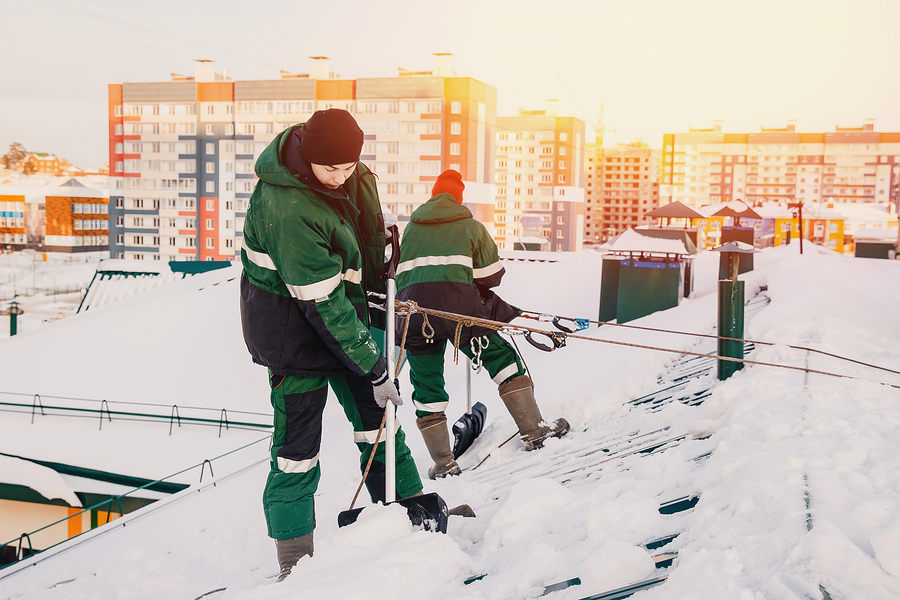
Preventing safety hazards and minimizing the risk of damage to your facility during the winter months can be challenging, especially when you need to deal with removing snow and ice from its roof. These elements tend to adhere to shingles and other roofing materials and, if left alone, can lead to excessive snow build-up, ice dams, and potential roof cave-ins, putting your facility’s interior and exterior at risk.
When to remove snow/ice from your facility's roof
The time to remove snow and ice depends on a number of factors:
- Ice dams
Ice frequently builds up on flat and low-pitched roofs, resulting in excessive weight loads and potential water damage. These ice dams will continue to grow as long as snow keeps building up behind them.
If the ice dam is small and warm weather is expected, you may be able to simply wait for the dam to melt. But in severe weather conditions, you may want to hire a professional ice dam removal company that uses steam to eliminate the hazard.
- Heavy snow loads
If your facility’s roof has a heavy snow load, it could become structurally stressed and cause leaking, creaking, or even roof collapse. Check your facility blueprint to determine how much weight the roof can support, taking into account the fact that roofs support less weight as they age.
As for determining how heavy the snow/ice load is on your roof, a square foot of snow weighs approximately one pound per inch of depth. You should remove snow from your roof when there’s a depth buildup of six inches or more, but be aware that wet or compacted snow can weigh up to six times as much as dry, powdery snow.
The best tools for rooftop snow removal
Here’s a quick rundown:
- Long-handled roof rake
The first tool you’ll need is a long-handled roof rake. While only effective on single-story buildings and at/near the eaves, roof raking helps prevent ice dams from forming and may enable snow further up on the roof to slide down so that it, too, can then be raked away.
While you’re at it, knock down those icicles. Just be sure to stand far enough back from the roof's edge while you’re doing it, and make sure there’s nobody below you.
- Plastic shovel
While a roof rake is best for regular removal efforts along the eaves, a plastic shovel is your best bet for removing the snow load from the roof’s surface. Shovels also work much better at clearing snow from roof valleys and for removing wet or compacted snow.
But make sure to use a plastic, not metal, shovel. Metal can damage your roof. Even with a plastic shovel you should leave an inch or two of snow on the roof to ensure you don't cause any damage.
- Safety equipment
Finally, make sure you don’t skimp on safety equipment. Use a steady ladder, wear proper winter clothing and, if possible, use a professional roof harness.
Of course, you can always hire a professional snow removal company to do the job. But whether you outsource the work or do it yourself, removing snow and ice from your facility’s roof is an absolute necessity to prevent ice dams, leaks, and roof collapse. Your roof protects the people and equipment in your company. This winter, don’t neglect them by neglecting your roof.


